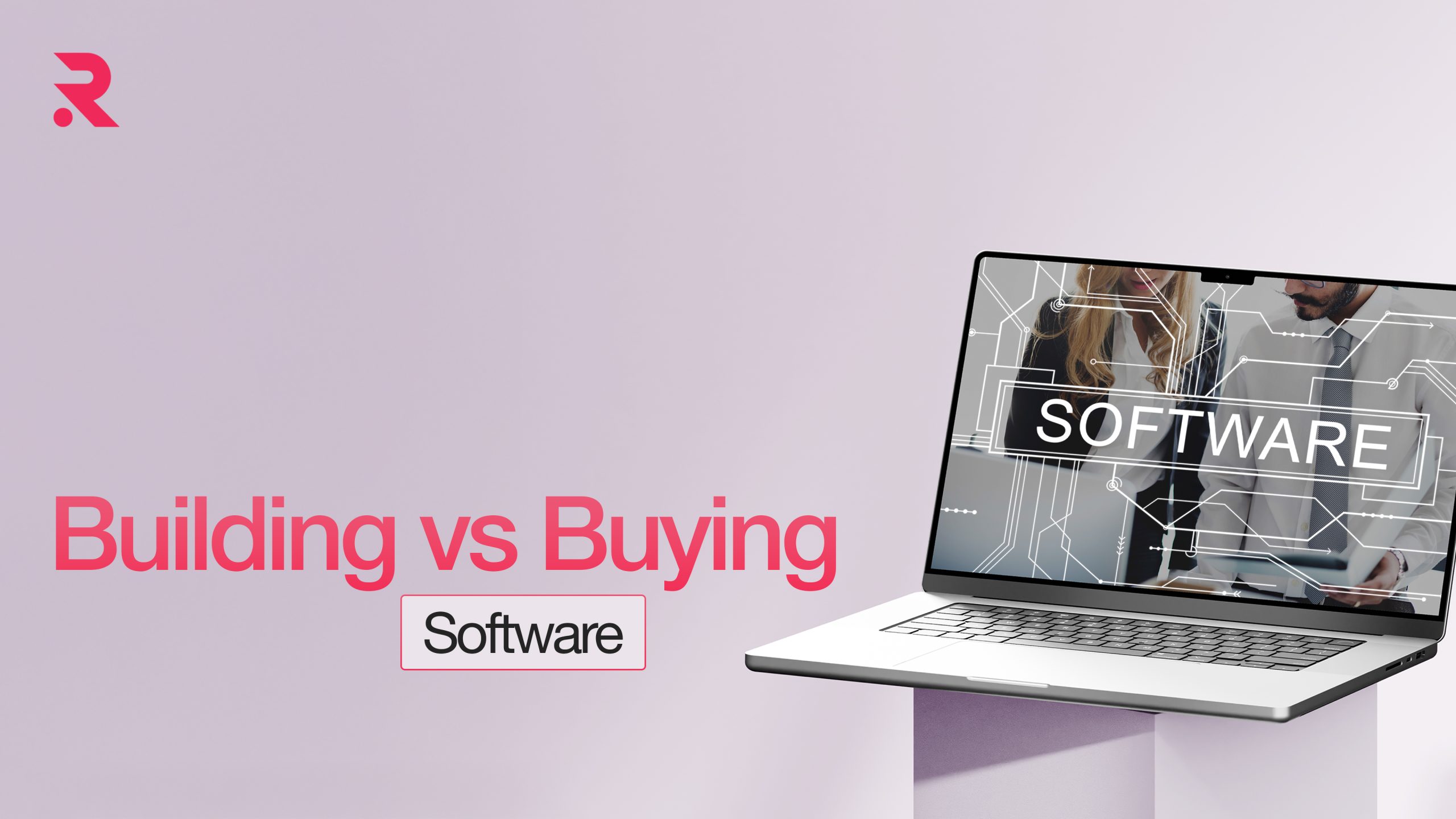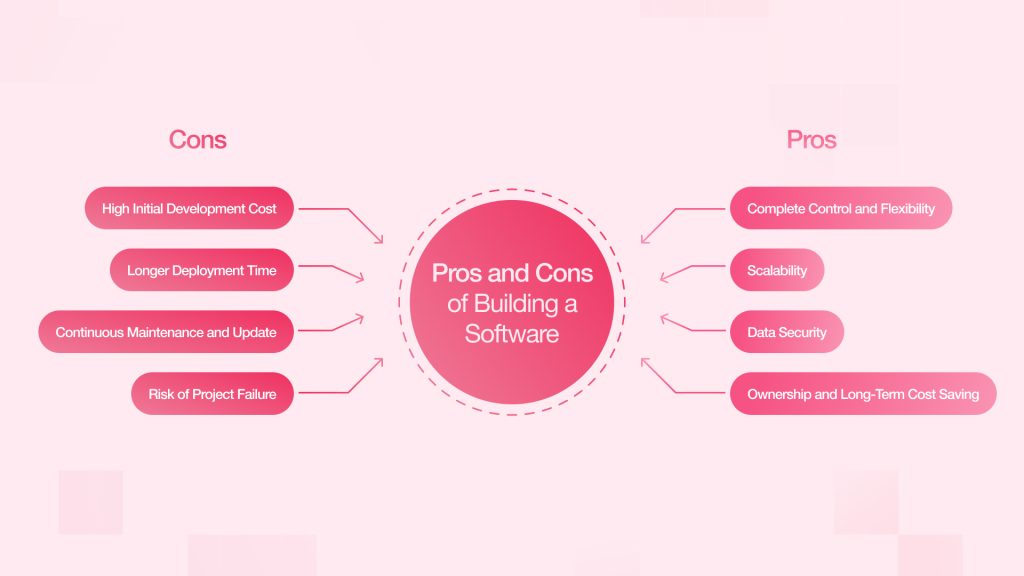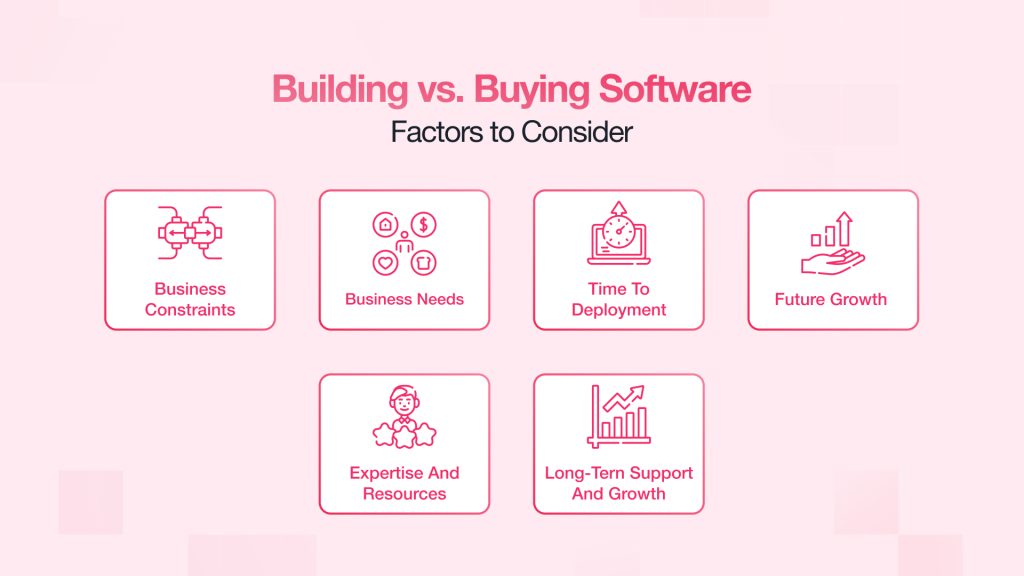Building vs. Buying Software: What’s the Best Financial Decision?
Choosing between in-house developed software and an off-the-shelf solution for the business is one major financial decision. This decision impacts the company’s bottom line, operational effectiveness, and long-term viability. In this article, we will look at the influencing decision factors to best inform your choice.
- April 2, 2025
- by Tarun


In today’s fast-paced world, selecting the right software is a crucial component of success. The decision of building vs. buying software can define an organization’s financial and operational future. In-depth knowledge of the pros and cons of an approach enables one to ensure that the best financial decision for the company is made. This article is meant to help business owners navigate the complexity of custom software development vs. off-the-shelf purchase of the software and give insight on how to select which one is the best for your business.
Building a Custom Software
Building software refers to developing a custom solution from scratch, typically done by a select in-house team or through outsourcing to a development company. This process gives an opportunity to bring into reality a solution that exactly fits the specific needs of the business.

Pros of Building a Custom Software
Complete Control and Flexibility: The most powerful benefit of building software internally lies in the complete control it gives over the entire development process. You can design your software precisely to your specifications, ensuring that it matches your business requirements and objectives with no compromises at all.
Ownership and Long-Term Cost Saving: The upfront cost of software development can be pretty high, but in the long run, custom software tends to incur less overall expenditure. The software is just developed and owned, and it does not need a continuing license or subscription cost incurred through third-party software, making the cost of ownership lower in long term.
Scalability: With custom-built software, you can select scalability as per your business needs. If your needs change, you can adapt and further develop the system without restriction on limitations that an off-the-shelf solution might have placed upon you.
Data Security: If your business deals with sensitive or confidential data, then developing your software can give you better control over data security. This would allow you to ensure that security protocols are designed to meet your requirements, which is often an uphill task when dealing with pre-built solutions.
Worried about data security? Here’s a guide to keeping your customer data secure.
Cons of Building Custom Software
High Initial Development Costs: Custom software means high expenditures initially on time and resources- such as hiring of software developers, project managers, teams for quality assurance, and others. This can act as a stumbling block for many businesses, particularly in case of low-capital availability.
Longer Time to Deployment: Custom software development takes time, and implementation needs to be very rapid in comparison. Depending on the complexity of the project, software development, and deployment can take months or, in extreme cases, years. During this waiting period, the client may also suffer productivity gaps and inefficiency.
Continuous Maintenance and Updates: Even when the software functionality is achieved, regular updates and maintenance will always emerge. These continuing costs will, after a while, mount up and may require a dedicated person or team to take care of problems such as bug fixing, system upgrades, and new technologies compatibility.
Risk of Project Failure: All software development projects carry risks, but companies with little experience face higher chances of failure. Problems the project may face include, but are not limited to, scope creep, late deadlines, and technical problems resulting in failure to meet the anticipated levels. The level of probable failure with custom-built solutions is higher than it is with purchased software.
Need a Reliable Web Development partner to help grow your Business?
Our Experts Can Help!
Buying a Pre-built Software
The activity of purchasing an off-the-shelf solution from an independent vendor. These products mostly require little setup and work out of the box to cater for a variety of business needs.
Pros of Buying Software
Less Initial Capital: One of the more attractive advantages of purchasing software is the lower initial cost when compared to in-house development. With no development required, an off-the-shelf solution can be implemented immediately at a fraction of the cost.
Quick Deployment: Store-bought software is usually available for immediate deployment or with minimal customisation. This lets a company use the software immediately, minimizing downtime and accelerating time to benefit.
Vendor Support and Maintenance: Purchase of software generally establishes a vendor-and-the-customer long-term relationship, which is beneficial in support and maintenance. Most vendors provide customer service, technical support, and updates to ensure smooth operation without extra labour or personnel.
Proven Solutions: Off-the-shelf software is tested through real-world use, making it more stable and feature-rich than custom-built solutions. Businesses can often rely on user reviews and studies to assess if a solution fits their needs.
Cons of Buying COTS Software
Limited customisation: Purchased software offers a quick solution but may not address your business’s specific needs. Off-the-shelf solutions may lack the flexibility to meet your business’s specific workflow and requirements.
Ongoing Subscription Cost: Now-a-days most of the vendors are using subscription-based pricing models. This means customers pay a regular subscription fee, potentially leading to higher long-term costs compared to custom solutions. This cost could add up if you are using multiple users for your business.
Vendor Lock-in: When a business purchases a software from the third-party vendor, they are dependent on the vendors for updates. These businesses will face many difficulties if the vendor discontinues the software or make changes in the pricing structures of the software. It will be costly for a business to switch to a new vendor.
Security Concerns: These off-the-shelf software comes with built-in strong security features, but these solutions are not developed to address your specific security concerns. If you are a business which deals with highly sensitive data, these software could raise a concern about meeting the security standards of your business.
Factors to Consider While Deciding Between Buying vs Building Software
While it may not be clear in every situation whether to buy or build a solution, Here are some factors that a business owner can consider while making the decision:

Business Constraints
With a limited budget, purchasing COTS software is typically more cost-effective in the short run. However, if you have funds for custom development that take scalability into account, having your software developed may prove worthwhile.
Business Needs
Consider how complex your business needs really are. If your company needs specific features or workflows, building a custom solution may be the best option. On the other hand, if your needs are standard, buying software could save you time and money.
Time to Deployment
Buying is definitely the best option if you need a software solution quickly because it takes months or, in some cases, even years to develop homegrown software, while off-the-shelf software can be operational almost immediately.
Future Growth
Most likely, there is going to be a lot of growth for your business in the future. If a lot of change or significant business growth is anticipated, custom solutions provide maximum flexibility. If no changes are anticipated, purchasing off-the-shelf software that meets current needs may be sufficient.
Expertise and Resources
The business should assess if it has the internal resources and expertise to develop and sustain custom software. The software development process may well become very expensive and time consuming without the right skills and personnel. on the other hand, if the organization has no resource available, the only viable option may be to acquire a pre-built software product.
Long-Term Support and Update
You must factor in the long-term maintenance and updates required for each software solution. For custom software, your internal team or a third-party provider handles upkeep, troubleshooting, and future updates. This could pose a continuous hassle, both in terms of money and precious time. However, if you buy off-the-shelf software, updates, patches, and support become the vendor’s responsibility and contractual obligation, ensuring that your solution will always be updated with minimal effort on your part. But you have to take the risk of waiting on the vendor’s time and priorities. Consider whether your team can manage custom software upkeep long-term or if vendor support suits your operational needs.
Looking for a Partner in Your Software Development Journey?
We Can Help!
Conclusion
The decision to select between building vs buying software should have a balanced approach between short-term and long-term financial considerations. Off-the-shelf solutions offer immediate savings and ease, while custom software provides long-term control and potential cost savings. Ultimately, it is crucial to evaluate the specific needs, budget, and objectives of your business before making this significant decision. Accessing all these factors will help you make the right decision that will help your business grow and get a better return on investment.
Both the options have their own advantages, but for making the right decision to ensure that your company is not financially burdened, make sure to understand the cost, risks, and benefits related to whichever approach you choose.
 Shopify
Shopify




















